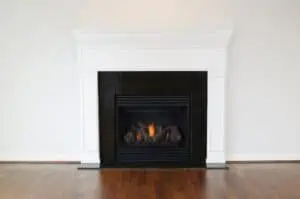How to Use Gas Fireplaces Properly?
Gas fireplaces can be an efficient and effective way to warm your home in the winter. It’s important to understand how to use your fireplace properly, though, as the improper operation could lead to a fire or carbon monoxide leak in your home.
(Looking for outdoor stone fireplace repair? Contact us today!)

Using your gas fireplace correctly will also help you save money on your heating bills. By adjusting the flame height and intensity, you can adjust your fireplace’s efficiency.
1. Turn Off Your Pilot Light
During the summer or when your fireplace is not being used for a long period of time, it’s best to turn off your pilot light. This will save you money on your gas bill and will help keep the air in your home cleaner.
2. Locate the Gas Supply Line
The gas line that runs to your fireplace is typically located under your fireplace box or in the back of your logs. Once you’ve located the gas line, open the valve to the gas line by turning it parallel to the gas line. Then, locate the pilot assembly’s spark ignitor. This is usually a small push-button shaped like a little red circle with the words “On, Off, and Pilot.”
3. Use a Fireplace Key to Light It
Once you’ve located the gas supply line, you’ll need a fireplace key to ignite your fireplace. Some fireplaces have a decorative slot where you can insert the key and control your gas valve.
4. Turn on the Ignition Switch
After you’ve opened the gas valve, press the ignition switch about once every second to ignite your fireplace. You may need to repeat this process multiple times until you’ve gotten your fireplace to light.
-
Hold the Control Knob Down After Igniting Your Fireplace
Once your fireplace’s pilot light has lighted, hold down the control knob until the flame starts to glow. If it doesn’t, retry the process or contact a professional to relight your fireplace.
6. Adjust the Ignition Level
The control panel on your fireplace should include a pilot knob, an igniter button, and a dial to adjust the flame’s strength. Many fireplaces also have a wall switch that you can use to set the ignition level. This information should be printed on the instruction manual of your fireplace, and you can also call a professional for help if you’re not sure how to operate it.
7. Clean Your Fireplace
When your fireplace is not being used, you should clean it periodically to remove any buildup of dirt, cobwebs, or debris. This can increase the life of your fireplace and reduce the likelihood of a malfunction down the road.
8. Install a CO Alarm
A carbon monoxide (CO) detector will help you prevent the inhalation of harmful fumes that can be released by your fireplace’s flames. These sensors can be a relatively inexpensive investment, and they can save you from serious medical conditions or even death in the case of an emergency.
While the safety pilots found on most gas fireplaces are a vital layer of protection, they can still fail if your home is not well-ventilated. It’s a good idea to install a CO alarm as soon as you can and test it weekly.

